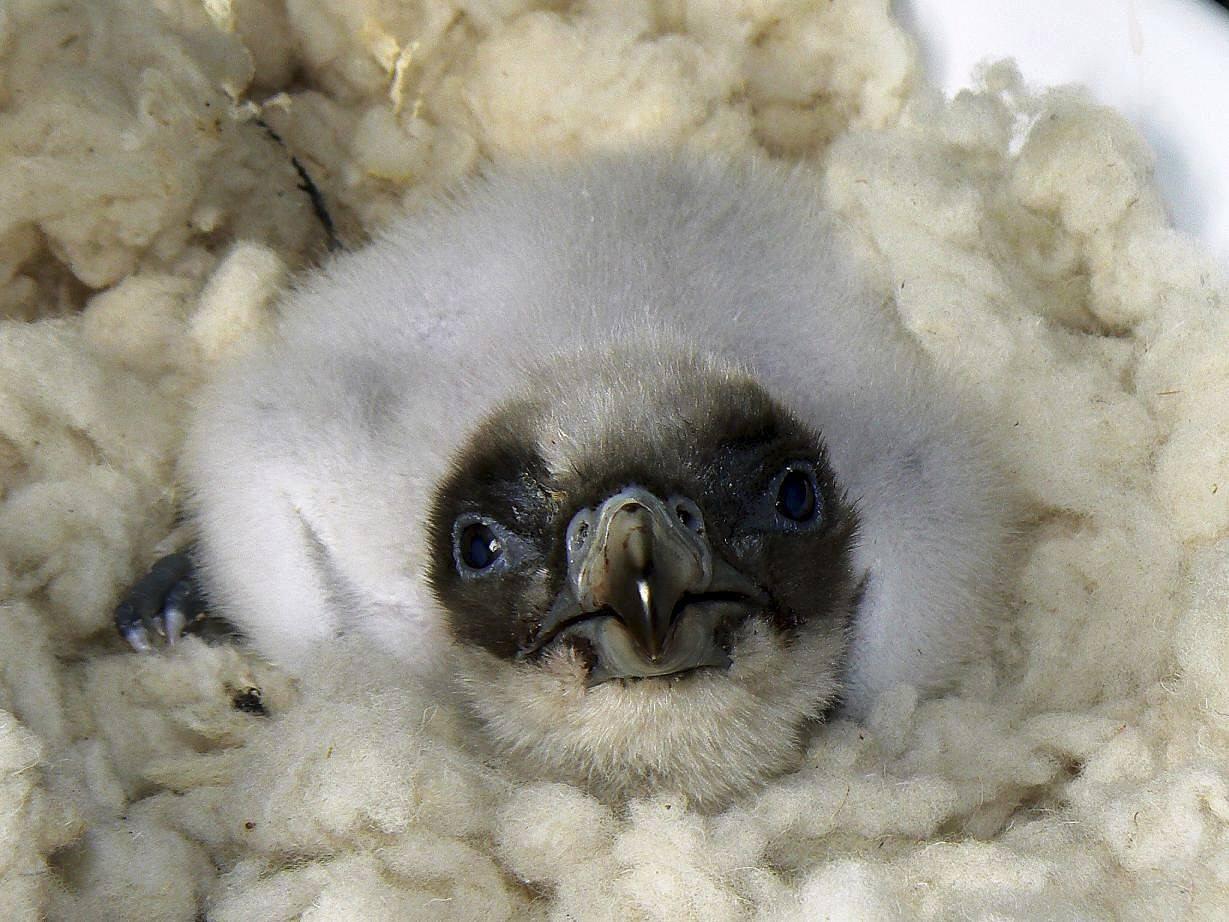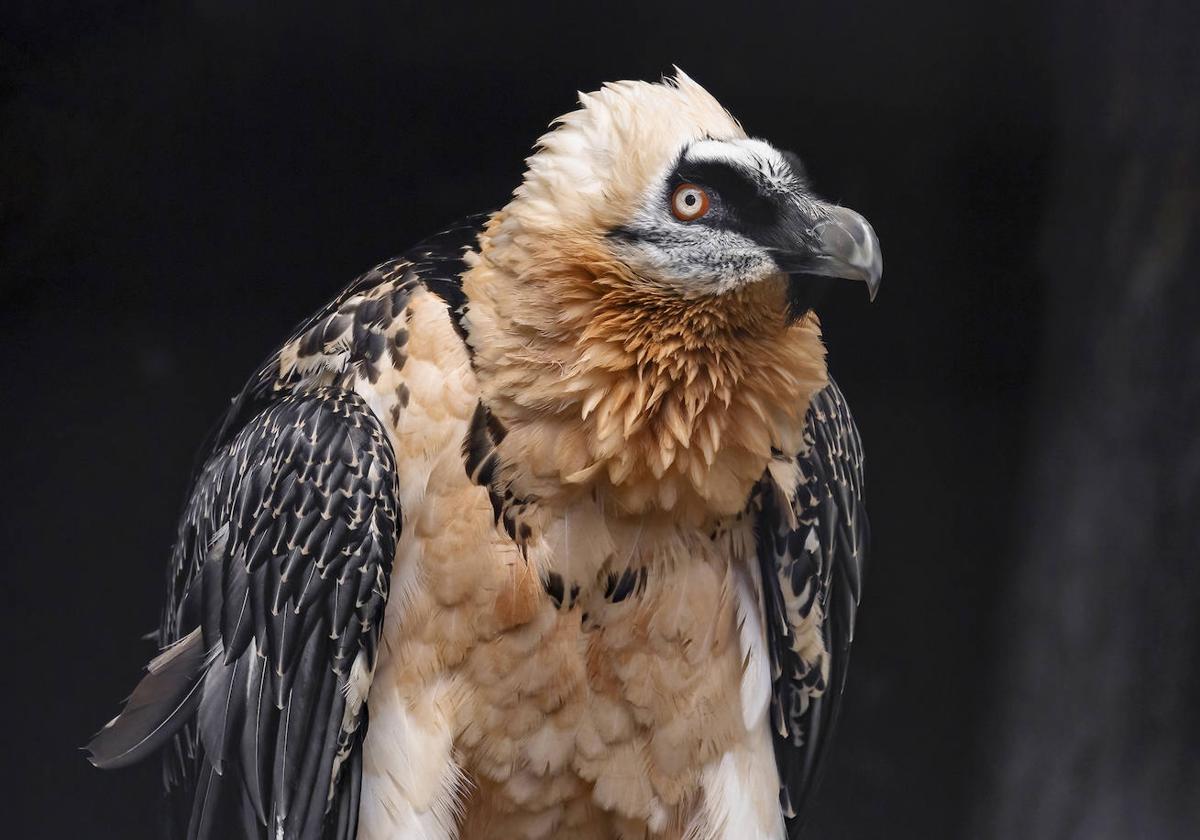Endangered vulture returns to the mountains of Granada
The province has twelve areas suitable for breeding in Castril and Sierra Nevada, where the birds have been introduced
Pilar García-Trevijano
Granada
Monday, 17 June 2024, 16:20
Efforts to prevent the bearded vulture, also known as the lammergeier or ossifrage, from becoming extinct are bearing fruit in Granada. Numbers started to increase in the Sierra de Castril, one of its historical territories, and has been introduced for the first time in the Sierra Nevada, where it has found a new refuge.
It had been decades since the bearded vulture had been seen in the heights of Granada. In 1986 was the last year it was seen between Cazorla and Castril. Human action, hunting and poisons to eliminate vermin from the fields saw its disappearance from the European mountain systems, where it is considered an endangered animal and in serious danger of extinction. At the end of the 1990s in Spain, only a few specimens remained in the Pyrenees.
However, thanks to the efforts of the Andalusian administration and a group of scientists, 90 specimens have been released in the Cazorla and Castril mountain range since 2006. Now, the Junta de Andalucía has installed artificial nests and has taken two young birds there to start populating the mountain range.
Borja Nebot, regional coordinator of the Plan for the Recovery and Conservation of Necrophagous Birds in Andalucía, who is behind the bird's return to the province, explains that four birds have been reintroduced this year and three more are expected to be released.
But for this reintroduction to be a success, a master trick is needed. Bearded vultures, known by this name because they collect skeletons and carapaces from great heights to break them against rocks to eat, return to breed in the places where they were born. Currently, most of the chicks are born in the breeding centre in Guadalentín (Cazorla), which has been in operation since 1996. The biologists of the programme have enough tricks up their sleeves to make them believe that they belong in the wild.
Artificial nests
Typically, nine months are spent on breeding, nest creation, incubation and chick care. Experts place an artificial nest in ravines or a steep, rocky mountain wall. The technique is known as 'hacking' and is used so that the bird, already developed but unable to fly, identifies with its species and the environment.

These animals born in captivity depend until they are three months old on their keepers in the incubator and, once the nests are installed in inaccessible areas of the mountain, they must be fed daily. They are fed through tubes that run through the gorge until they reach the nest.
In natural breeding the parents only need to approach the nest to provide food because these birds are thermoregulatory. With reintroduced bearded vultures, it is the environmental technicians who leave the food in the area, just as their parents would do, and they do not maintain any kind of contact.
In this way, even though the chicks were born in captivity, they recognise the new environment as their own, a safe place to breed again when they reach adulthood.
Thanks to all these steps, in 2015 the first specimen in Spain was born, and was christened Esperanza, meaning hope. Bearded vultures reach adulthood at the age of seven and can live between 30 and 40 years, even longer in captivity. In the last decade, 16 specimens have been born and will soon begin to fly.
One of these chicks has hatched in Castril, from a pair of birds named Seprona, after the Guardia Civil's nature protection branch, and Ama, after the environmental agents. Two chicks have already been released in the Sierra Nevada in June and a third one is expected to be introduced soon.
In total, the current Andalusian population of bearded vultures is around 65. The chicks are distinguished from the adults by their plumage. The released specimens are tracked using GPS relay equipment, a kind of rucksack that is installed on the animals' backs. In addition, some of the wing feathers are discoloured and, as they take three years to moult, scientists and biologists are able to recognise that they are from the programme. All of the birds in the programme are also ringed.
Space chosen by the bird
These birds fly very far in their first years of life and some have reached the Sierra de Gredos, the Pyrenees and Morocco. As bearded vultures have been frequent visitors to Sierra Nevada, the Junta decided to try to introduce the species in the area, where a dozen areas have been identified that are suitable for breeding and reproduction. Here they have a large availability of food - the mountain goat, or domestic livestock.
The recovery plan of the Andalusian environment department is part of a larger European programme that has made great progress. To celebrate the arrival of the bearded vulture in the Sierra Nevada, the Junta has prepared an event to take place in Dílar on Monday 17 June.
People will be able to get a close-up look at a four-month-old baby bearded vulture with eye damage which means it will remain in captivity for the rest of its life. The programme must keep the location of the nests secret to prevent onlookers from disturbing the birds.
